Ryan Hall's Blog, page 131
September 12, 2017
3 Expert Tips To Racewalk Your Way Through Your Next Race
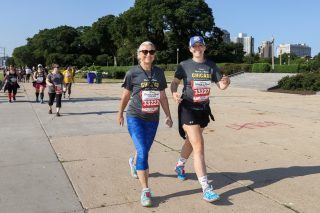
When a friend suggested walking a half marathon to Kevin Gonzalez in 2010, he wasn’t sure about the idea. A postal worker by day, Gonzalez had been a good runner in high school but was overweight now. He decided to walk the Rock ‘n’ Roll Arizona Half Marathon on a whim and finished in a little more than three hours. Since then, he’s walked more than 100 Rock ‘n’ Roll Marathon Series races, lost a lot of weight and aims to racewalk his way through the Marathon Majors. “Over the years, I’ve sort of fine-tuned the craft,” he says.
To get started walking your first race, here are some tips…
Practice your technique
Gonzalez racewalks, which is a specific kind of technique and style—like what you see in the Olympics. While Rock ‘n’ Roll races don’t have official racewalking judges, he still practices his technique, watches tapes to see how he can improve and competes against himself. But even if you just want to power walk, you still need to train and focus on your technique. Walking a race isn’t just a stroll in the park.
Prepare for a long day
Madora Mak, an event manager for Rock ‘n’ Roll, says, “Listen to your body.” That means bringing extra sunscreen, water and fuel to be ready to go the distance. It’s also important to be honest about what race corral you should start in, or you’ll end up blocking or being blocked by other athletes. Often, that means starting at the back so as not to get in the way. Mak notes you should be aware of cutoff times that can vary by course, but the follow vehicle behind the last athlete can move people forward on course if needed.
Do your thing
Have fun! Mak often sees groups of walkers taking advantage of the entertainment stops on course, listening to the bands and participating in activities like Snapchatting their favorite signs or taking selfies. “If you’re going to stop, shift to the side,” says Mak, leaving the middle of the road open for others on the move. Even if you plan to racewalk or walk competitively, the best way to achieve that is still to maintain your own pace and focus on yourself. “Race your race, not someone else’s,” says Gonzalez.
What is proper race etiquette?
Start in the right corral for your pace, which may be the last one.
Don’t walk four or five abreast.
Be aware of your surrounding and other participants.
Yield to those trying to pass you.
Don’t stop suddenly, or people may run into you.
Signal or call out to others, so they know if you want to pass or if you’re moving aside.
RELATED: 4 Breathing Exercises For Every Level Of Runner
The post 3 Expert Tips To Racewalk Your Way Through Your Next Race appeared first on Competitor.com.
3 New Stylish GPS Run Devices To Get Your Hands On
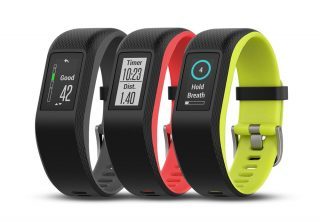
2017 is shaping up to be a year of fitness wearables with deeper on board GPS run capabilities and serious run wearables with more style. Three products just released this past month exemplify the trend: The Fitbit Ionic—the brand’s first and long overdue smartwatch with GPS, the Garmin Vívosport—the smallest GPS enabled band style watch to date, and finally, a stylish smaller and lighter version of Suunto’s all sports capable Spartan, The Trainer.

Garmin Vívosport
$200, amazon.com
Highlight: The practically invisible GPS/HR Watch
Who is it for: The runner who wants full on board GPS run capabilities in an unobtrusive fitness, HR, sleep, activity, music control, and notifications band that can be worn 24/7.
The Vívosport is the smallest and lightest fitness band with integrated GPS from any major brand to date. It is a great choice if you also wear a regular watch or bracelets. At 25 grams, it’s about the same weight as the popular Fitbit Charge HR, but slightly wider. But it is lighter and considerably thinner than its predecessor the Vívosmart HR+. Despite the small size, battery life does not suffer with up to 7 days in watch mode and 8 hours in GPS mode. It not only packs in all the features of an up-to-date activity and HR band but also includes GPS run, walk and cycle tracking. The screen is more than adequately viewable in bright sunlight on the run. And for such a tiny surface with no buttons, the touch screen is very intuitive and reliable to operate even with sweaty fingers on the go. Run data fields are customizable and include average pace, and elevation via its barometric altimeter. A full activity band, it also tracks HR 24/7, sleep, estimates V02 max, calculates and displays stress levels via HRV (heart rate variability) and provides phone notifications and music control.

Suunto Spartan Trainer
$279 or $329 with metal bezel, amazon.com
Highlight: Rugged multi-sport GPS/HR watch in a compact, fashionable format
Who is it for: The adventurous runner who wants a compact size, stylish multi-sport and all-day watch that isn’t heavy, big or overly pricey.
The Spartan Trainer joins its larger, pricier cousin the Spartan Sport Wrist HR as a smaller, lighter yet solidly built fashionable option at a great price. Training battery life is 10 hours—extendable to 32 hours with less frequent sampling. But it has a strong 14-day battery life in time mode. The data screens with 4 to 5 fields each are somewhat hard to see in sunlight due in part to skinny small digits for secondary data fields and a comparatively dim screen. Highly customizable via the Movescount site, a multitude of Sports Modes and data fields can be configured to the watch. Unusual for the price point, but a staple for mountain-focused Suunto, the Trainer can save points of interest and do a breadcrumb navigation of route files uploaded to the watch. Suunto recommends a warm-up to improve go time wrist heart rate accuracy. An impressive feature of this watch is the GPS-based elevation readings, although as the Trainer does not have a barometric altimeter such readings take somewhat longer to lock in. A decently featured smart watch, the Trainer includes phone notifications, activity, basic sleep tracking, and can graph and display your heart rate over the last 12 hours, including minimum HR, all presented in an elegant modern fashion.

Fitbit Ionic
$300, rei.com
Highlight: Fitbit’s first smartwatch with GPS, contactless payments and music on board
Who is it for: Fitbit health insights fans and on-the-go runners who want to leave the phone, music player, wallet, and even personal trainer behind.
Fitbit is going all in with the Ionic. Priced $60 less than the Apple Watch Series 3, it has a GPS for phone-free running, hiking and cycling, an oxygen saturation sensor and a barometric altimeter. Of course, Ionic includes the Fitbit app’s rich suite of easy-to-understand and act on health insights, including its excellent Sleep Stages and Insights and cardiac fitness data from its continuous Pure Pulse heart rate monitoring. The battery life spec of up to 10 hours in GPS mode and 4 days in watch mode doubles that of the Apple Watch Series 2 and is competitive with other GPS run watches. An app platform will allow developers to extend the watch’s utility. The colorful, high brightness LCD touch screen can display personalized, guided workouts, and the watch can even suggest a more intense workout after a restful night. SmartTrack automatically detects the start of runs and even swims (the seamless watch case is water resistant to 50M). Up to 300 songs can be stored on the watch including curated Pandora Plus or Premium workout stations. Listen to them on wireless BT earphones including Fitbit’s new Flyer ($130). Fitbit does not forget style and versatility, offering a variety of interchangeable bands including leather, classic, and sport.
RELATED: What To Look For In a GPS Running Watch
The post 3 New Stylish GPS Run Devices To Get Your Hands On appeared first on Competitor.com.
September 11, 2017
How Runners Should Eat During Their Marathon Taper

During extensive marathon training, you will build strength, endurance and confidence. At the same time, marathon training can break you down. It will break down your muscle fibers, deplete your glycogen stores and leave you feeling tired and fatigued. That is why the marathon taper is such an important component of training. You need time to heal any damage that has happened from training, while also filling up your muscles’ glycogen stores.
Tapering your miles isn’t the only important component. This nutrition guide on how to eat during the taper will ensure optimal energy stores and avoid unwanted weight gain.
Decrease Calories, Keep Up Carbs
The biggest mistake most marathoners make during the taper period is not cutting down on food intake, even though they are burning significantly fewer calories through exercise. Most marathon taper plans start with the last long run 3 weeks out from race day, with running volume significantly decreasing each week. Since you will be exercising less, you don’t need as many calories as you did when you were burning them for training.
If you normally ran 10 miles in a day while training, and during the taper you only ran 6, you would burn approximately 400 calories less.
The excess calories not being used for exercise can be used to load up your muscle glycogen stores. However they could also accumulate into unwanted weight gain. To be sure that you are adding to your glycogen stores and not just promoting weight gain, you must pay special attention to slowly decreasing your overall caloric intake, while maintaining adequate carbohydrate intake.
In order to decrease calories but keep up carbohydrate intake, you will have to trade some of the calories coming from fat for more carbohydrates. Fat should still contribute 20-25 percent of your total daily calories. Since you will be eating fewer calories, this will mean less total grams from fat.
The following are some swaps you can make to cut down on fat and increase carbohydrate:
Pancakes with maple syrup instead of butter
Pasta with tomato sauce instead of cheese or a cream-based sauce
Salad with an extra dinner roll instead of full-fat dressing
Extra plain baked potato instead of “fully loaded” (butter, sour cream, cheese)
The goal for carbohydrates should be to maintain a daily intake of 3-5 grams per pound of body weight (6-10 g/kg). For a 150-pound athlete, this will be approximately 450-750 grams (1800-3000 calories).
That is a lot of calories, so you have to be smart about keeping to a number within that range that is relative to your overall caloric needs. If you only need 3000 calories per day, then 450-500 grams would be adequate. Your body size plays a role as well. Smaller athletes should aim for the higher end of their range while larger athletes should stick towards the lower end.
You can double your muscle glycogen stores with adequate carbohydrate intake. Extra glycogen stores extra water, which shows up as extra weight. This is nothing to be concerned about. If you are properly carbohydrate loaded, you should expect to be 2-4 pounds heavier due to the extra water stored in your body.
RELATED: The New Rules Of Carbs For Runners
Protein For Maintenance and Repair
Protein is needed to repair muscle damage and fatigue resulting from prolonged distance training. The goal for protein should be approximately 0.6-0.7 gram per pound (1.3-1.6 g/kg). Going back to our example of the 150-pound athlete, this would be 90-105 grams of protein per day.
This can easily be achieved by having a couple of servings of lean protein (chicken, turkey, roast beef, fish) or protein-rich foods (eggs, beans, tofu, lentils) each day. Dairy products are also good sources of protein and carbohydrate.
Keep in mind that many grains can contribute protein, as well. One serving of pasta (2 dry ounces) has about 42 grams of carbohydrate and 7 grams of protein. One slice of whole-grain bread has about 20 grams of carbohydrate and 4 grams of protein.
Choose More Fiber, Less Junk
Eating foods rich in fiber promotes regular bowel movements, while eating too many refined products (white bread, pasta, rice) can lead to constipation, especially when training has been decreased.
Good sources of fiber include fruits, vegetables, and whole-grain breads, pastas, and cereals. Fruits and vegetables are also a good source of antioxidants, which can boost the immune system and ward off illness. Be careful not to overdo it on fiber, as it could unwittingly cause runner’s diarrhea and subsequently bring about dehydration and electrolyte imbalances. Popular fiber bars or other fiber-enriched foods are not necessary. Stick with the foods you normally eat and are comfortable with.
Remember that you are exercising less, so you need to make each calorie count. Don’t waste it on “empty calories” like cookies, candy and ice cream that may have fit in while you were training hard. Save those treats for after the race. Use the last few weeks to hone in on good nutrition practices to optimize your performance.
RELATED: 5 Foods Runners Should Consider Taking A Break From
Hydrate
Dehydration can significantly impair performance. It is easily preventable with adequate hydration in the weeks, days, and hours leading up to the race.
To ensure you are properly hydrated, sip on fluids throughout the day. Water is sufficient, but juices and sports drinks can help meet your carbohydrate needs if you find that the food volume is too much. However, don’t rely solely on these beverages, since they contain a lot of sugar.
Instead of looking for a specific number of ounces to drink, I implore you to use your body’s own measures of hydration. You should have to urinate every 2-4 hours and your urine should be pale yellow. If it is darker, then hydrate more. If it is clear, you may be hydrating too much.
Race Day Nutrition
After months of training, you can rest assured that you are ready for the big race. There is no further training you can do to make yourself anymore ready. As they say, the hay is in the barn. The same is true for nutrition.
Hopefully, you have been as diligent with your nutrition as you have been with your training, especially during the taper period. There is nothing you can do the day before the race to make up for poor nutrition in the months and weeks leading up to it. However, here are a few tips for race day nutrition that can help you optimize the hard work you have done.
Reduce fiber intake. Although you want to have enough fiber to promote normal bowel function, too much fiber can cause diarrhea, especially when combined with race day nerves.
Stay away from alcohol. Alcohol is empty calories and can lead to dehydration. You can wait for the post-race celebration to indulge in some adult beverages.
Eat your biggest meal at lunch. It is a common tradition to have a carbo-load meal the night before the race. However, eating this meal earlier in the day will ensure adequate time for digestion. You don’t want to be uncomfortably full on race morning. Do try eating a big meal earlier and a normal size meal the night before.
Eat breakfast. Eating breakfast is important because a small meal rich in carbohydrates will help prevent hunger and maintain a normal blood sugar level. Stick with foods that are familiar and those you have been eating throughout your training.
Have a fueling plan for your race. Each individual is different with how they fuel and what they use during the race. You should have practiced your race day fueling while in training so don’t change that up last minute. Figure out what works for you and stick with it.
RELATED: The Taper Advice Nobody Tells You
The post How Runners Should Eat During Their Marathon Taper appeared first on Competitor.com.
Veterans Jenny Simpson and Nick Willis Win Again On 5th Avenue Mile
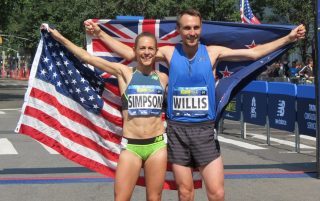
Nick Willis of New Zealand and Jenny Simpson of Boulder, Colo., after winning the 2017 New Balance 5th Avenue Mile. Photo: Jane Monti for Race Results Weekly
Jenny Simpson and Nick Willis both proved that experience counts when it comes to running the New Balance 5th Avenue Mile. Simpson scored a record sixth title down the famed New York City boulevard after Willis notched his fourth victory in the event, staged by New York Road Runners on a picture-perfect day.
With the temperature at 70 degrees, low humidity and a generous wind at their backs, both the men’s and women’s professional races were exceptionally fast. Willis broke the tape in 3:51.3 while Simpson clocked 4:16.6 to equal the venerable event record set by PattiSue Plumer back in 1990.
In the men’s race, defending champion Eric Jenkins and Robby Andrews took the early lead for the opening downhill blocks. Craig Engels and former Oregon star Edward Cheserek, making his professional debut, joined them on the front line as they hit the first quarter in about 59 seconds. As the course flowed uphill, 800-meter specialist Drew Windle jumped out front, eager to snag the $1,000 bonus given to the first runner to hit the half-mile mark. He dueled with Engels and even dipped at the marker to hold a tiny edge as they came through in 1:58. (Alas, Engels would take home the prize, after Windle faded badly and didn’t meet the requisite 4:00 finishing time needed to collect.)
Engels opened up a gap on the field during the third quarter as the road sloped down, but he was swallowed by the pack shortly after the three-quarter mile mark (2:56). Brits Chris O’Hare and Jake Wightman surged ahead, but Willis smoothly positioned himself towards the center of the pack, before launching a perfectly timed kick in the final 100 meters to grab the win.
“I think I ran over one of the manhole covers with 30 [meters] to go and I was already at my max so I was worried that I was gonna fall over there,” said the 34-year-old New Zealander, who previously won this race in 2008, 2013 and 2015.
O’Hare (3:52.0) held on for second, ahead of Ben Blankenship (3:52.3), with the next five runners separated by only three-tenths of a second and a total of 19 men clocking sub-4:00 times.
“We had a really strong field, so I knew that I’d have to use my experience on this course to run my best,” said Willis, who had run conservatively in the middle of the pack for most of the race. “I knew I had to wait and wait and wait and wait and be the last person to make the move. The finish line always looks closer than it really is, so I used the 1500-meter mark as my gauge to when I really got into fifth gear. I was able to slingshot off of them right at the end and thankfully it was enough.”
A two-time Olympic medalist in the 1500m, Willis placed a disappointing eighth at the recent IAAF World Championships in London. “This was a great way to finish what has been a pretty trying season for me with a lot of hiccups and injuries along the way,” he said as he points to the 2018 Commonwealth Games in April where he is likely to move up to the 5000 meters.
Simpson took a more assertive strategy than Willis, immediately going to the front of the women’s race. A pair of Brits, Laura Weightman and Jessica Judd, quickly joined her up front through a 62-second opening quarter.
Nobody seemed terribly eager to snag the halfway bonus, so Judd made a last-second decision to go for it, splitting 2:10 and picking up the extra cash (which she says she’ll put towards her upcoming vacation to Hawaii). She continued to force the pace until Simpson and Weightman caught her about 200 meters from the finish. The American cruised home comfortably, with Weightman taking second in 4:17.6 and Judd holding off a late-surge from Brenda Martinez for the final podium spot, 4:18.3 to 4:18.4. In a mass finish similar to the men’s event, 16 women broke 4:30.
“This race can be really different if the wind is at your back or in your face, and the road can be really uneven, and so just knowing how to time yourself and know when to look up at the finish and when not to look at the finish is really important part of timing it right,” said Simpson, who took silver in the world championships 1500m last month, the fourth international medal of her career. “So over the years I think I’ve just gotten it down to a science. And the beautiful thing is, with 5th Avenue, when the road is clear it’s pretty much the same every year, so I know where I want to put in my surges.”
This was Simpson’s unprecedented fifth straight victory down 5th Avenue, dating back to 2013. Her first win came back in 2011, but despite all that success, she knows she’s going to be challenged. “The first quarter mile you’re headed downhill and there’s always this sense in your mind that maybe it’ll feel easy,” she admits. “And then it doesn’t. And then you think, these girls are gonna make me run so hard this year. As I get farther into the race I believe more and more, the crowd gets incrementally louder and louder and I just can’t let people down.”
Simpson will resume training after a 10-day break, and this fall she’ll take her first vacation since 2010 when she and her husband, Jason, spend a week in Hawaii prior to the wedding of her friend Emma Coburn, who finished ninth on Sunday.
Both Willis and Simpson earned $5,000 for their titles, which capped a day of 23 heats featuring a record 7,664 finishers over a variety of age groups and abilities in the 37th running of the event.
(c) 2017 Race Results Weekly, all rights reserved
The post Veterans Jenny Simpson and Nick Willis Win Again On 5th Avenue Mile appeared first on Competitor.com.
September 8, 2017
8 Ways To Be Healthier At Work Without Taking A Lunch Run Break

I don’t do well sitting at my desk for 8 hours at a time. And I think a lot of runners agree with that sentiment. Still, there are several ways to be healthier at work beyond taking a run at lunch or eating a salad, which is not always doable or palatable, respectively.
Here are eight ideas to try around the office to be healthier.
Use a standing desk
There is now such a thing called “sitting disease.” Sitting for long periods of time, as many of us do in the modern work world, has been linked to increasing the likelihood of disability, heart disease and failure and cancer, among others. Experts say transitioning to a standing desk can help decrease the effect of sitting disease, thereby improving your health. Plus, it’s likely to make you move around more often.
Walk the nearest staircase for 5 minutes each hour
Most workers in a typical office use some sort of e-mail/calendar program combination. And most offices have stairways, even if people never use them, thanks to the more convenient elevator. Try setting a calendar reminder once each hour or two to walk the stairways for about 5 minutes. This little activity will give you a break without taking you away from your desk for too long. It will also increase your fitness and health.
Park farther away
Most folks are familiar with this one. Parking your car farther away from the office or subway entrance is a great way to add steps onto your day without really thinking about it. Taking the stairway at work instead of the elevator is another easy way to get moving.
Go on a short 10-15 minute walk
Many folks can’t afford to go on a full length run during their lunch break, but a brisk 10-15 minute walk can be doable in many professions. Take a quick stroll in your office’s neighborhood. If the weather’s bad, just walk around your office building for the same amount of time. Hit up different floors if possible,
Get up and talk to a co-worker every couple hours
Sitting in front of a computer all day is not good for anyone. If you can’t take a quick walk at lunch or climb stairs every hour or two, try at least getting up and walking over to a co-worker’s desk for a quick chat every couple hours. You can replace something you’d normally send in an e-mail with in-person communication. Or just head over to check out how your co-worker’s day is going.
Have a healthy mid-afternoon snack
It’s 3 p.m. and your energy is slumping and your tummy is growling. Instead of heading to the vending machine or reaching for a fat-loaded snack, grab something healthy to munch on. A banana, orange or apple is a great place to start. If you need a bit more, try a granola bar or protein shake.
Get lunch outside the office and walk there
Taking a break for lunch is common in many offices, so why not head outside to a nearby restaurant. Better yet, find one you can walk to. You’ll burn a few calories before and after your meal. Plus you’ll be more likely to feel refreshed afterward.
Avoid the office cookie/candy jar
Work places are notorious for their cookie and candy jars, not to mention the ongoing conveyor belt of birthday cakes that parade through. It’s certainly fine to grab a slice or piece of chocolate every now and then, but avoid making it an everyday or even weekly habit. You likely won’t remember to count those couple Snickers snack bars into your daily calorie count. Those little buggers can pack on the pounds quickly if you’re a frequent snacker.
For more from Katharine Lackey visit Kat Runs D.C.
RELATED: 8 Hacks To Make Your Running More Efficient And Enjoyable
The post 8 Ways To Be Healthier At Work Without Taking A Lunch Run Break appeared first on Competitor.com.
What Amy Cragg Can’t Run Without
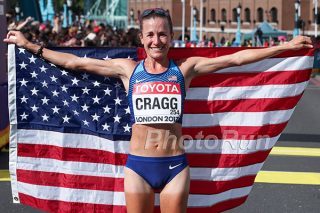

Photo: Photorun.net
American distance runner Amy Cragg recently became the first American woman to bring home a marathon medal at the World Championships since 1983. Last month in London, she posted a 2:27:18 to claim the bronze. But she couldn’t do it alone! These are the things she simply can’t run without.
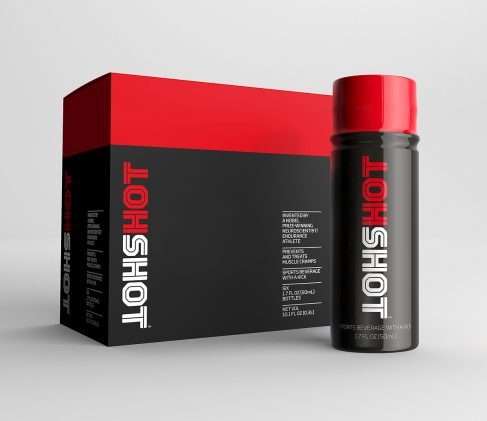
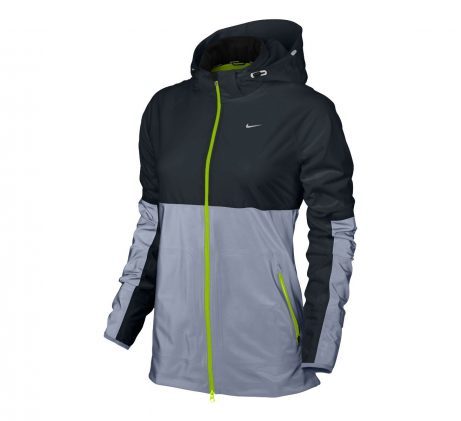
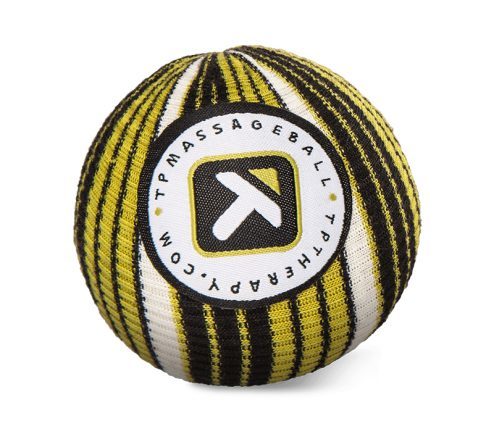


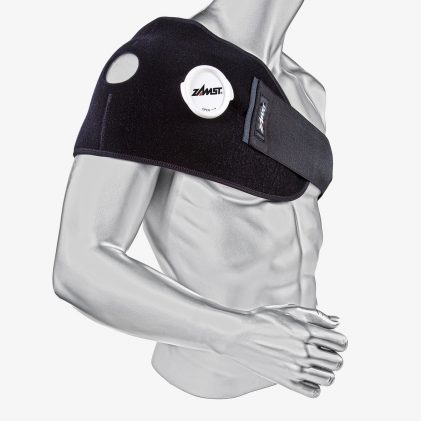
The post What Amy Cragg Can’t Run Without appeared first on Competitor.com.
Study Links Running Program For Boys To Healthier Behaviors
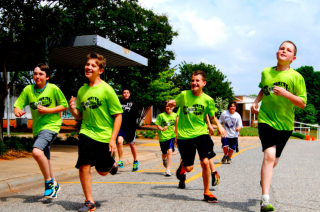
A nonprofit program is helping adolescent boys live a healthy lifestyle while building up their psychological, emotional and social health—all through the power of running. And a recent study shows that their work towards fostering compassion and confidence in kids has been successful.
Let Me Run is a nonprofit wellness program for elementary and middle school aged boys. Founded by Ashley Armistead in 2009, the program now enrolls over 17,000 boys across 27 states. Each spring and fall, teams meet twice a week for seven weeks. Each program ends with a 5K race and celebration.
Inspired by the caring behavior of her own sons, Armistead wanted to create a group that cultivated a healthy emotional environment for adolescent boys.
“Society seemed to be setting an expectation that boys are not capable of settling down, being respectful of people and property, being caring, and having the ability to concentrate,” Armistead says. “I always seemed shocked by these beliefs, as I know that my boys far surpass me in their caring actions, integrity, and self-control. I was deeply disturbed by the low expectations that we were setting for our boys.”
The goal of Let Me Run is to promote healthy masculinity. So often young males are told things like, “Man up” or “Stop acting like a girl.” These phrases promote unrealistic and dangerous stereotypes of how boys are supposed to act. Let Me Run works to allow boys to better express their emotions and show affection. The program also promotes confidence and respect for others, which allows boys to connect and better maintain friendships.
Recently the University of North Carolina at Greensboro’s Institute to Promote Athlete Health and Wellness studied Let Me Run over the course of two seasons. They found that the program significantly improves boys’ attitudes and behaviors associated with healthy masculinity. The ability to express their feelings led boys to have less physical altercations.
Let Me Run also increased boys’ vigorous physical activity levels. Participating in Let Me Run reduced boys’ screen time on school days and increased their social competence. This was the first published study to examine healthy masculinity in boys, as well as a program’s ability to improve it.
Armistead wants her message of healthy masculinity to extend to any age group. It is especially important for parents of boys involved in Let Me Run to understand her goal.
“We would like our mission to reach every male, whether it be through participation, coaching, volunteering, or seeing the change in others who have been involved.”
RELATED: NYRR And New Balance To Give 2,500 Kids Free Running Shoes
The post Study Links Running Program For Boys To Healthier Behaviors appeared first on Competitor.com.
September 7, 2017
Balega’s New Sock Collection Honors Inspirational Runner
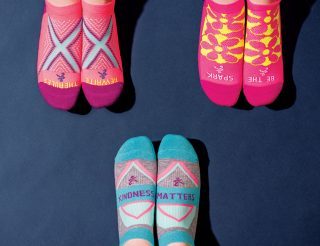
So many runners rely on inspirational messages to keep going. Sometimes it’s written on a hand or bracelet and you can look down for a boost. Or it’s a race sign that your family holds along the road as you soldier on. It can even be a mantra you repeat or a text from a friend that you recall mid-run.
RELATED: The Magical Powers Of Mental Mantras
Balega offers a new option this month for your feet. Choose among these three sayings (and many other color options) to leave your own personal foot note with the Grit and Grace collection ($14 each, with $1 benefiting Breast Cancer Prevention Partners). The maxims are printed on Balega’s Enduro for women—a mid-weight sock with extra cushion on the bottom and arch support.
But the story doesn’t end there. This new collection is dedicated to Kim Stemple of Baton Rouge, La., a runner who understands how much of a difference kind words can make. After being diagnosed with a terminal illness, she founded We Finish Together to pass along medals and words of love and support to people going through challenges.
RELATED: This Act Of Kindness During A Half Marathon Is Going Viral
Thousands of people have been cheered through her efforts so Balega wanted to take the opportunity to honor her: “Living large every day and giving her all, Kim is an inspiration for so many to keep going, and above all, to offer a comforting hand when needed, as a reminder that kindness matters.”
The post Balega’s New Sock Collection Honors Inspirational Runner appeared first on Competitor.com.
Sugarland’s Thad Beaty’s Journey To Becoming A Runner
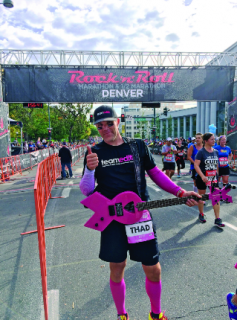
Photo: Edith Sanford Breast Cancer Foundation
The universe was not being subtle when it sent Sugarland guitarist Thad Beaty three messages that he needed to change his life. First, his mother was diagnosed with colon cancer. Then it was friend and Sugarland guitar tech Kevin Quigley being diagnosed with Stage IV lymphoma. Finally, it was the much-publicized and tragic stage collapse at the Indiana State Fair in 2011 that killed seven people minutes before Sugarland was set to perform.
“I was embracing the rock-and-roll lifestyle, and you can imagine what that entails,” Beaty says. “We were touring and doing 200-plus dates a year. Eating the local fare. And if you’re at state fairs, there are a lot of deep-fried Snickers bars and Krispy Kreme hamburgers. I needed to reclaim what I could control. And part of what I can control is my health.”
RELATED: How Running And Music Intersect For RAC’s Liz Anjos
Six years later, 75 pounds lighter and a heck-of-a-lot healthier, Beaty is an Ironman, cycling and swim coach and has participated in half a dozen Rock ‘n’ Roll Marathon Series events. Most notably—at the Denver half marathon in 2015—he ran the course and stopped to join a different band at every mile and play guitar for about 15 minutes at each. A friend rode a bike alongside Beaty with his ribbon-shaped guitar.
“There is a certain level of training that goes with stopping and playing,” he says—half joking, half serious. “Elevated heart rate, sweaty hands, running again after 15 minutes of standing and playing. It’s tough.”
Beaty is heavily involved in multiple charities—including the Edith Sanford Breast Foundation for breast-cancer research—and has also worked with the Melanoma Research Foundation and MusiCares through the Grammy Foundation to raise thousands of dollars.
“The determination of going after something bigger than you and bigger than you ever thought you could pull off is extremely powerful if you just say ‘yes’ and dive in,” says Beaty, who also recruits and trains other fundraising athletes. “There is wonderful joy in helping them do that.”
RELATED: Scientific Proof That Music And Running Are A Good Mix
Beaty has played with Beyoncé, Lady Gaga and Rihanna, and while Sugarland is on a break, his creative firm helps pair bands with movie and television producers. But he still finds time to “dork out” when he’s at home. “Right now I love to sit down with my guitar and jam on 80s hair metal.”
Beaty’s Beats
Sugarland guitarist Thad Beaty flip-flops when it comes to running with music. But when he does, he likes an eclectic mix. Here are eight of his favorite running songs—and his reasons for loving them.
1. “Waiting on the World to Change” by John Mayer (It just grooves!)
2. “Blank Space” by Taylor Swift (Yep, I’m a dork. But the tempo is 184 and perfect for setting the pace.)
3. “My Hero” by Foo Fighters (This is so I can feel tough after Taylor Swift.)
4. “Fix You” by Coldplay (It’s just epic.)
5. “Kickstart My Heart” by Mötley Crüe (A nod to the hair-band roots.)
6. “Tennessee Whiskey” by Chris Stapleton (Something about this song stirs me and I can get in the zone.)
7. “Hail to the King” by Avenged Sevenfold (Once again, this is to feel tough.)
8. “Fire Your Guns” by AC/DC (I truly think I was supposed to be in this band.)
Download this playlist at RunRocknRoll on Spotify.com.
RELATED: These Are The Top Workout Songs Of Summer
The post Sugarland’s Thad Beaty’s Journey To Becoming A Runner appeared first on Competitor.com.
Why Everyone Needs A Local Running Store
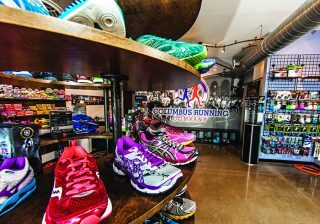
Photo: James D. DeCamp
Everyone has their favorite store. That place where you know you can get exactly what you need, receive good service and walk out completely satisfied. In my running-obsessed life, of course my place is a running store! More specifically, it’s my local running store, Fleet Feet Sports in Gaithersburg, Md.
I’ve been running for almost 12 years. When I started I was totally clueless. I picked out shoes off of the sale rack at a store and called it a day. I embarked on my running journey with what I hoped were running-specific shoes and trained for my first 5K. Soon thereafter, I decided to sign up for a 15K race with a friend. I took an online questionnaire and self-diagnosed my running style. Soon after I ordered what I felt were the correct shoes online.
After shin splints, plantar fasciitis, and multiple other issues, I finally learned my lesson. I wandered into a running-specific store to get fitted for shoes for my first marathon. Finally my shoes that fit right and are suited towards heavy mileage!
When I moved home to Maryland nine years ago, I quickly sought out Fleet Feet Sports. And over the years, I’ve been a regular customer—from shoe fittings to bra fittings to advice on gifts for family members. I’ve always received excellent customer service that keeps me coming back.
RELATED: How To Buy Your Next Pair Of Shoes
Even though I’m not a beginner anymore, I still get fitted for each new shoe. Many things can change over years of running. What kind of mileage I’m doing now, how my feet may have changed with pregnancies and the impact of running long distances over the years all factor into the choice of a new shoe.
Recently I went back into the store with fairly new shoes on my feet. I had been fitted for the shoes at Fleet Feet that had just taken me through the Philadelphia Marathon. I asked a question about a seam fraying on the shoe. According to the store, the shoes should not have fallen apart so quickly. They replaced my shoes immediately with a fresh pair. That’s great customer service.
Fleet Feet has grown their training programs, becoming a part of the fabric of the running community here in Maryland. They have always offered a couple of “fun runs”, but through the years I’ve seen them expand their training programs. It always seems as though something new is popping up on their calendar. In fact, they served nearly 900 participants in their training programs in 2014. How impressive is that?
The advice at Fleet Feet Sports Gaithersburg flows freely. The time they’ve spent with my hard-to-fit feet has been impressive. And after I lost 50 pounds, a bra fitting was a life-saver too!
I’ve noticed them become a part of the community and a go-to resource for all things running and athletics. I found my my go-to place for all things running.
Read about Cynthia’s running and other adventures at You Signed Up For WHAT?!
RELATED: 10 Best Trail Running Shoes Of Fall 2017
The post Why Everyone Needs A Local Running Store appeared first on Competitor.com.
Ryan Hall's Blog
- Ryan Hall's profile
- 21 followers



